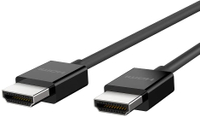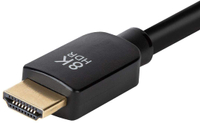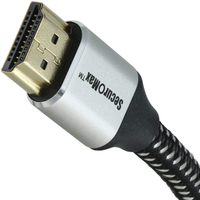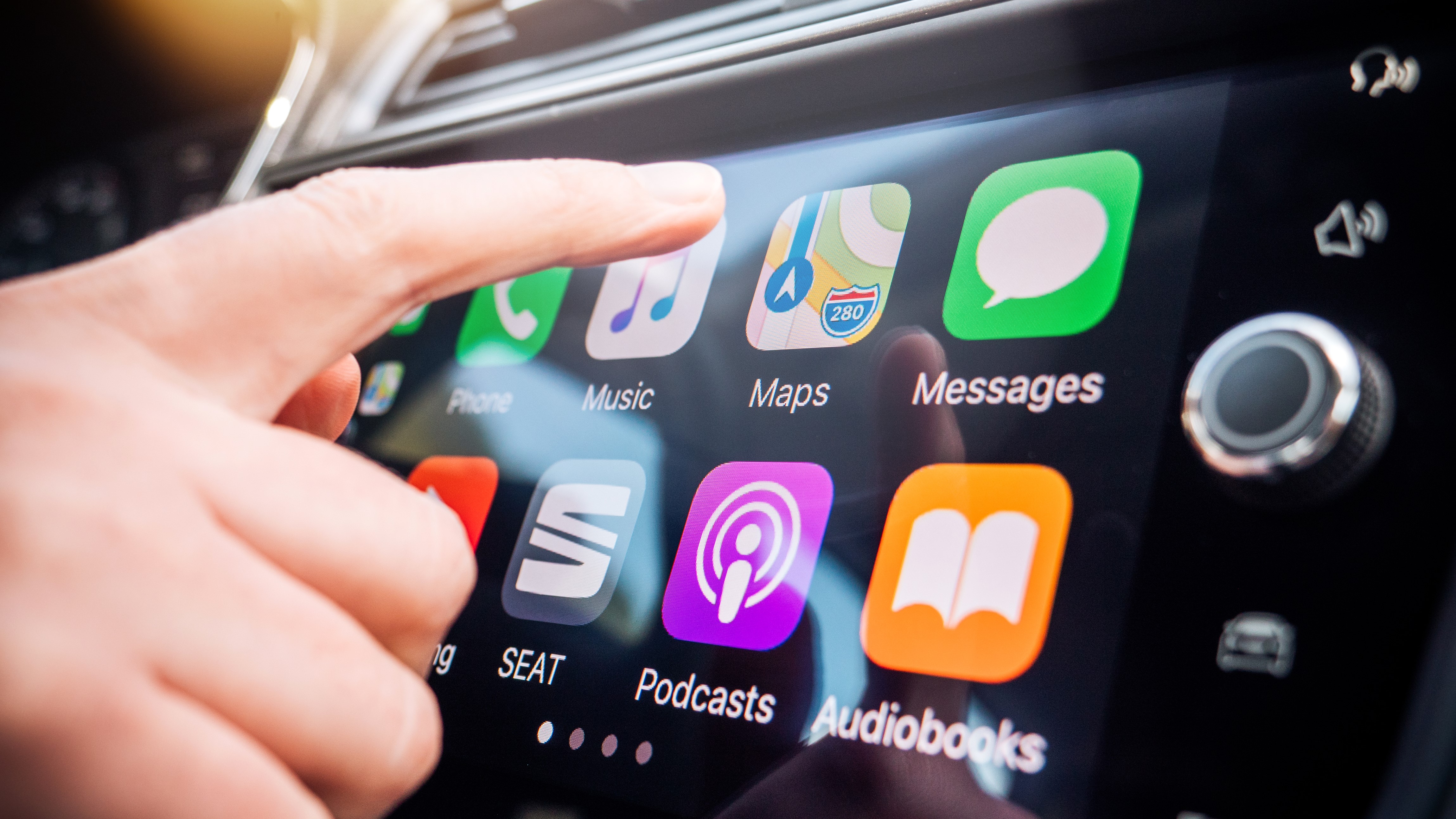The best HDMI 2.1 TVs
Make 4K/120Hz happen on one of the best HDMI 2.1 TVs
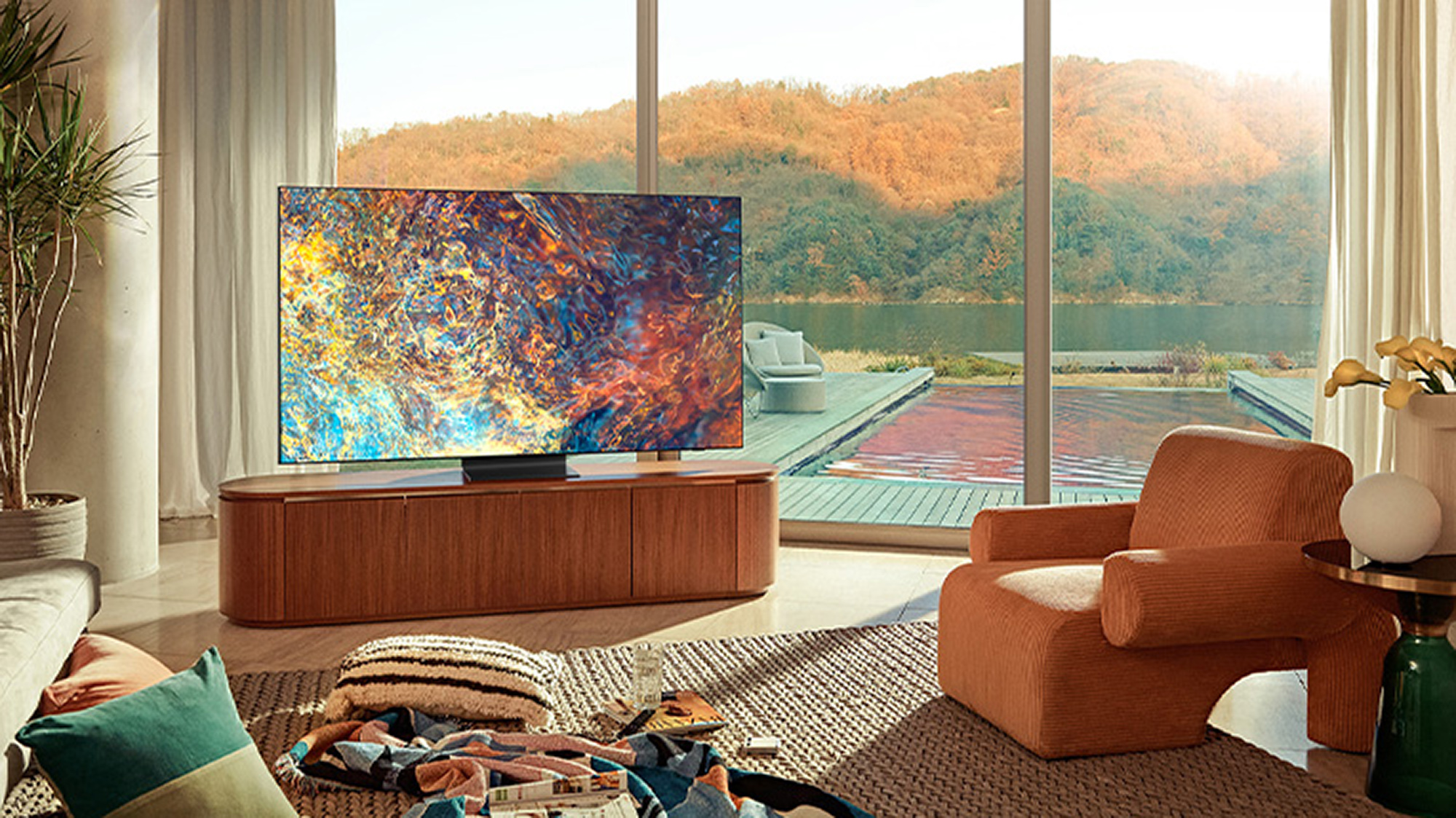
The best HDMI 2.1 TVs are the ones that will get you the best gaming features, allowing you incredible speeds, improved resolution support, and even several HDR enhancements. Expect better sound syncing too, as these TVs should be kitted with ALLM and VRR support.
With HDMI 2.1 support, you'll be granted access to 4K 120Hz gaming thanks to the aforementioned VRR. Gone are the days of HDMI 2.0, which taps out at at a mere 60Hz. HDMI 2.1 format gives you the keys to future gaming features, like 8K support, even if the gaming side of that resolution is still miniscule. Even so, it's hard to look past 8K60 workloads.
When on the hunt for some of the best HDMI 2.1 TVs, you'll want a display with a set of four inputs to choose from, particularly one that's 144Hz or, at the very least, 120Hz. Take, for instance, our top pick: the LG C5 OLED TV. It sports four total inputs on a 144Hz refresh rate with coverage for both G-Sync and FreeSync. Another great option is the Samsung S95F OLED TV, which offers a 165Hz refresh rate for the PC gamer crowd.
Fortunately, there are several budget alternatives out there, main among them the Hisense U8N, a Mini-LED TV with serious potential for under $1,000. There's plenty more to enjoy among the best HDMI 2.1 TVs, as our years of testing shows we certainly know where to look when you need to find the right display for your needs.
The best HDMI 2.1 TVs you can buy
Why you can trust Tom's Guide
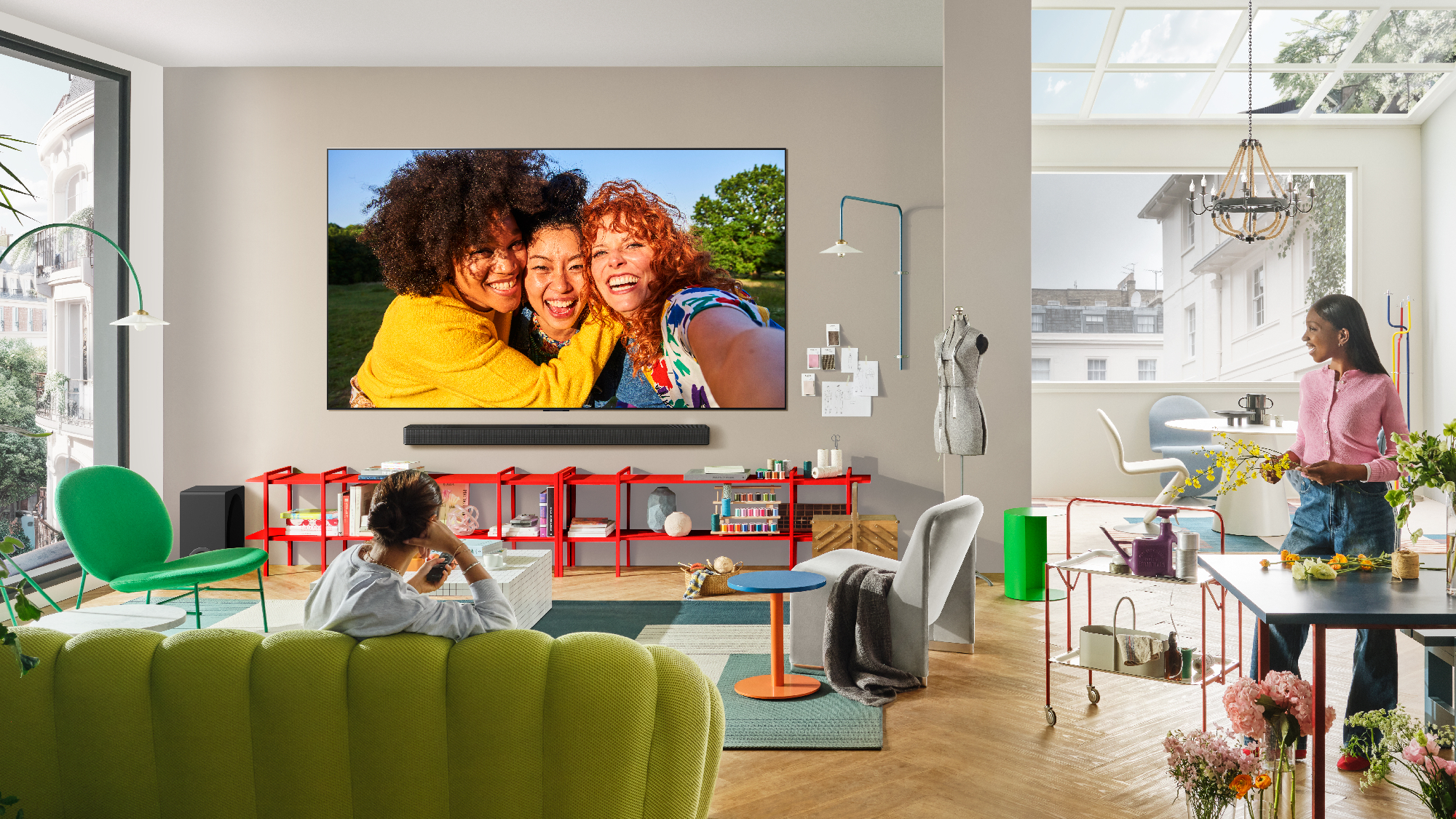

Specifications
Reasons to buy
Reasons to avoid
The LG C5 OLED is finally here and it's a stunning new entry into LG's webOS platform. In our review of the C5, we raved about its brightness and color performance, which owes to its WOLED panel.
In our testing, we found the C5 kicked out 1,165 nits of peak brightness in HDR. That's some serious performance and ample enough to combat glare. It's also got one of the lowest Delta-E scores we've seen with 1.25, the lower the better.
What makes the C5 OLED stand out is value. We always rave about the lower prices on LG C-Series, and while it's still a bit early in the year the C5 still comes in at the same price as its predecessor — with a multitude of upgrades to boot.
LG's also taking a few steps in upgrading webOS, bringing major gaming features to the platform, especially when it comes to game streaming. Xbox Game Pass is set to launch on the system before the end of the year, which is a huge get for webOS, as it's already home to a slew of features thanks to its Game Portal.
There's a lot to love with the C5 OLED, most especially given its four HDMI ports, which makes it an ideal pick among the best HDMI 2.1 TVs. A 144Hz VRR refresh rate also makes it a powerful option for hardcore gamers.
Read our full LG C5 OLED review.
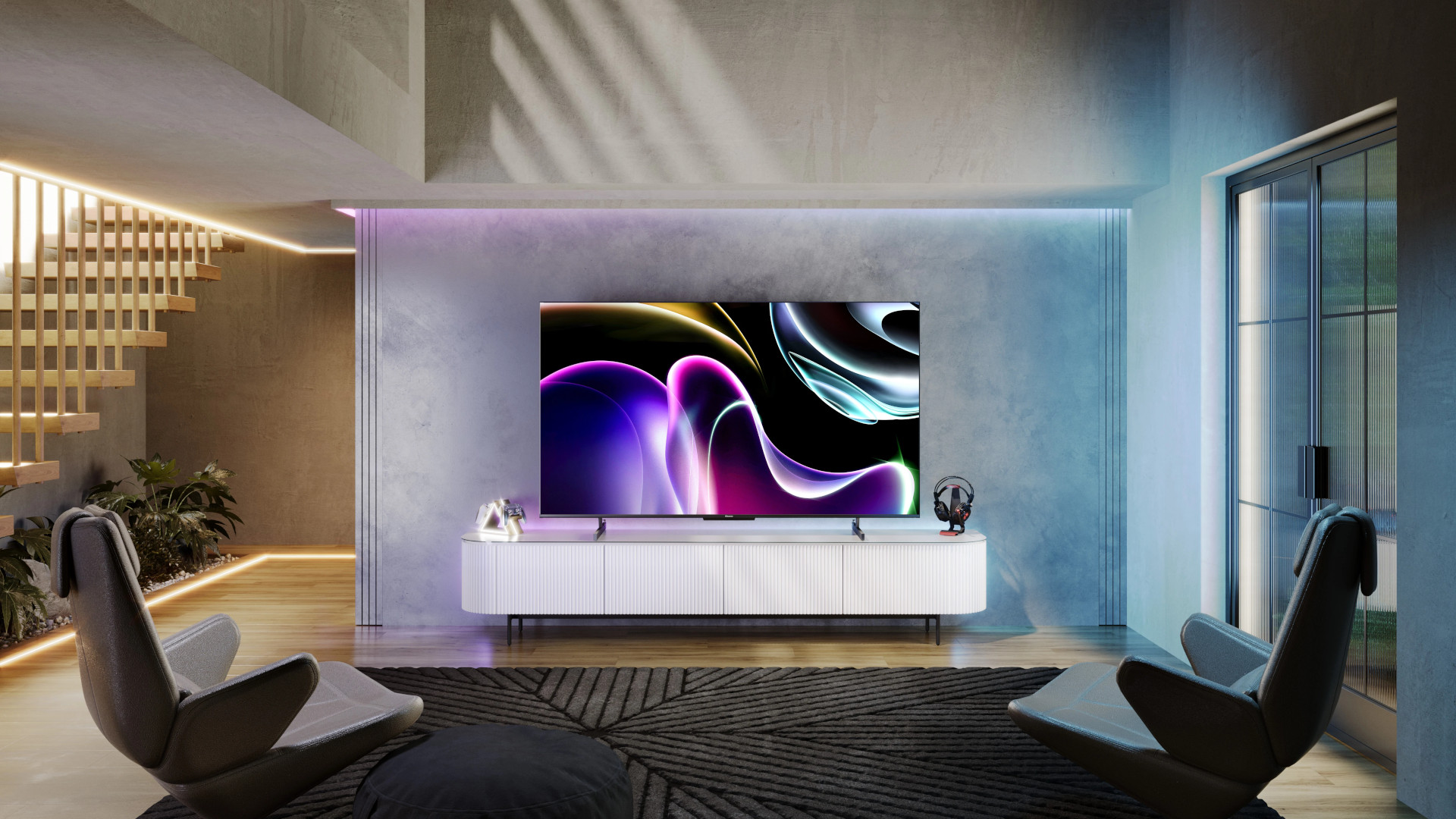
Specifications
Reasons to buy
Reasons to avoid
As one of the best TVs under $1,000, the Hisense U8N proves a stellar HDMI 2.1 TV. It might only sport two ports for the higher frames, but its 144Hz refresh rate is what really makes the U8N an utter steal of a display and one of the best gaming TVs.
Taking up after the U8K, the Hisense U8N Mini-LED TV invites loads of appeal due to its Mini-LED panel and a heightened TV chipset. But what makes the Hisense U8K really stand out from the crowd is its exceptional value at just $800 for the 65-inch configuration.
Where most TVs fall flat, the Hisense U8N stands tall thanks to a powerful sound system that delivers quite the punch. In need of one of the best soundbars for your TV? Don't bother, because the U8N comes equipped with Dolby Atmos and gifts your content and games that extra oomph where it matters most.
While you would like to see an input latency under the 10ms mark, the Hisense U8N hits just above that at 13.1ms, which isn't bad in the least. Plus, it comes equipped with AMD FreeSync Premium Pro, allowing you to game at the highest potential without any screen tearing.
It's among the best HDMI 2.1 TVs, as the Hisense U8N will get you into the game without breaking a sweat.
Read our full Hisense U8K Mini-LED TV review
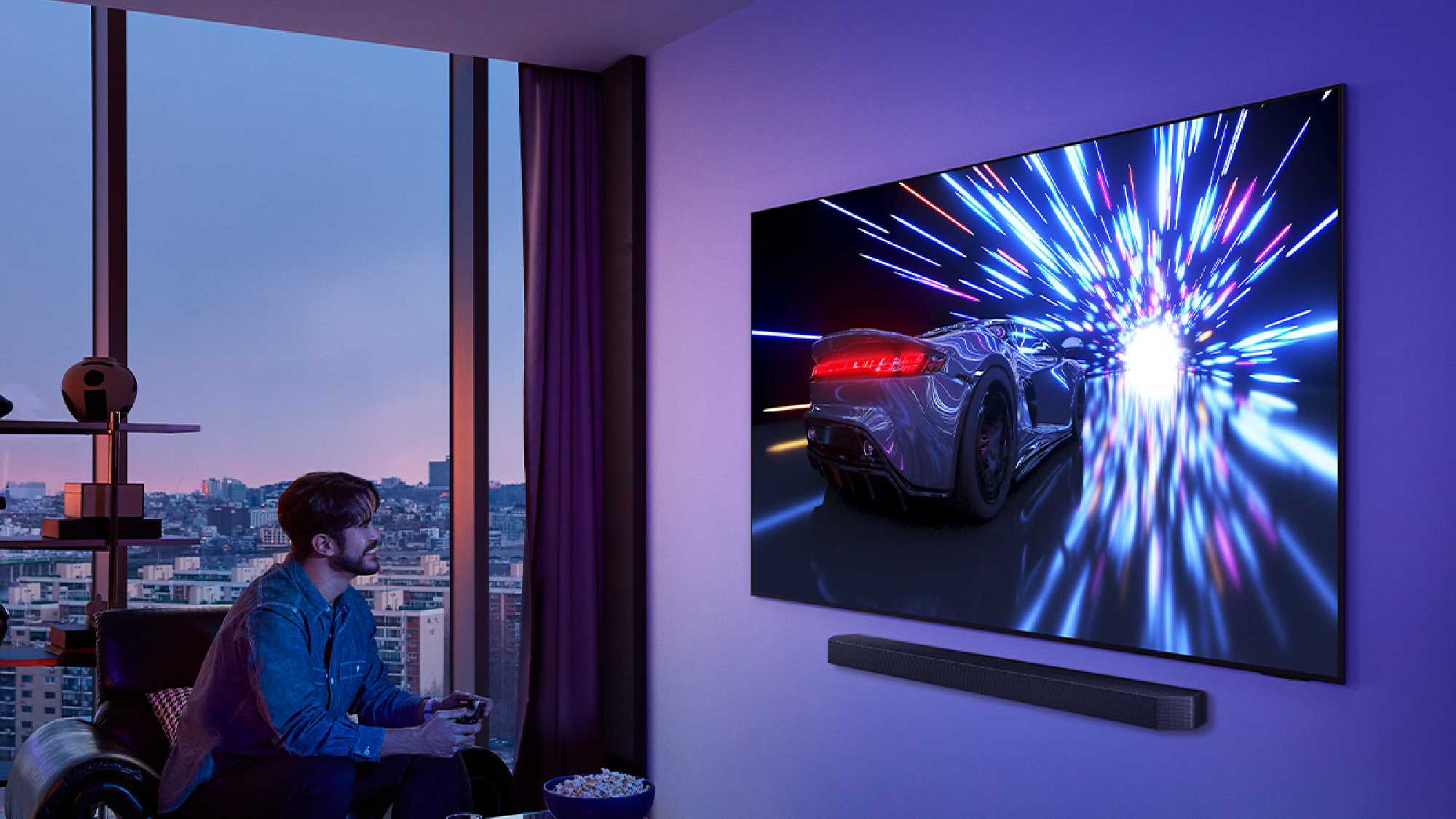
Specifications
Reasons to buy
Reasons to avoid
Meet the newest entry in Samsung's 2025 TV lineup, the flagship S95F OLED TV. This is a true beast of a display and one of the best HDMI 2.1 TVs due to its four HDMI 2.1 ports. It makes exceptional use of these with a multitude of gaming features that let it stand out, which come alive within its Gaming Hub.
Similar to LG's G5 OLED, the S95F is built on a 165Hz refresh rate, making it a gaming icon, especially if you're running one of the best gaming PCs. This year's model is also coming in a new 83-inch model, perfect for the big-screen TV fans.
You can also kiss cables goodbye as the One Connect box gives the S95F wireless connectivity so your home entertainment setup stays nice and clean.
While the Samsung S95F already has incredible glare mitigation thanks to its anti-glare coating, it's also retrofitted with incredible performance with 2,138 nits in HDR. And a 9.5 input latency gives it the fast-paced gaming potential it needs to really stand out.
Read our full Samsung S95C OLED TV review.
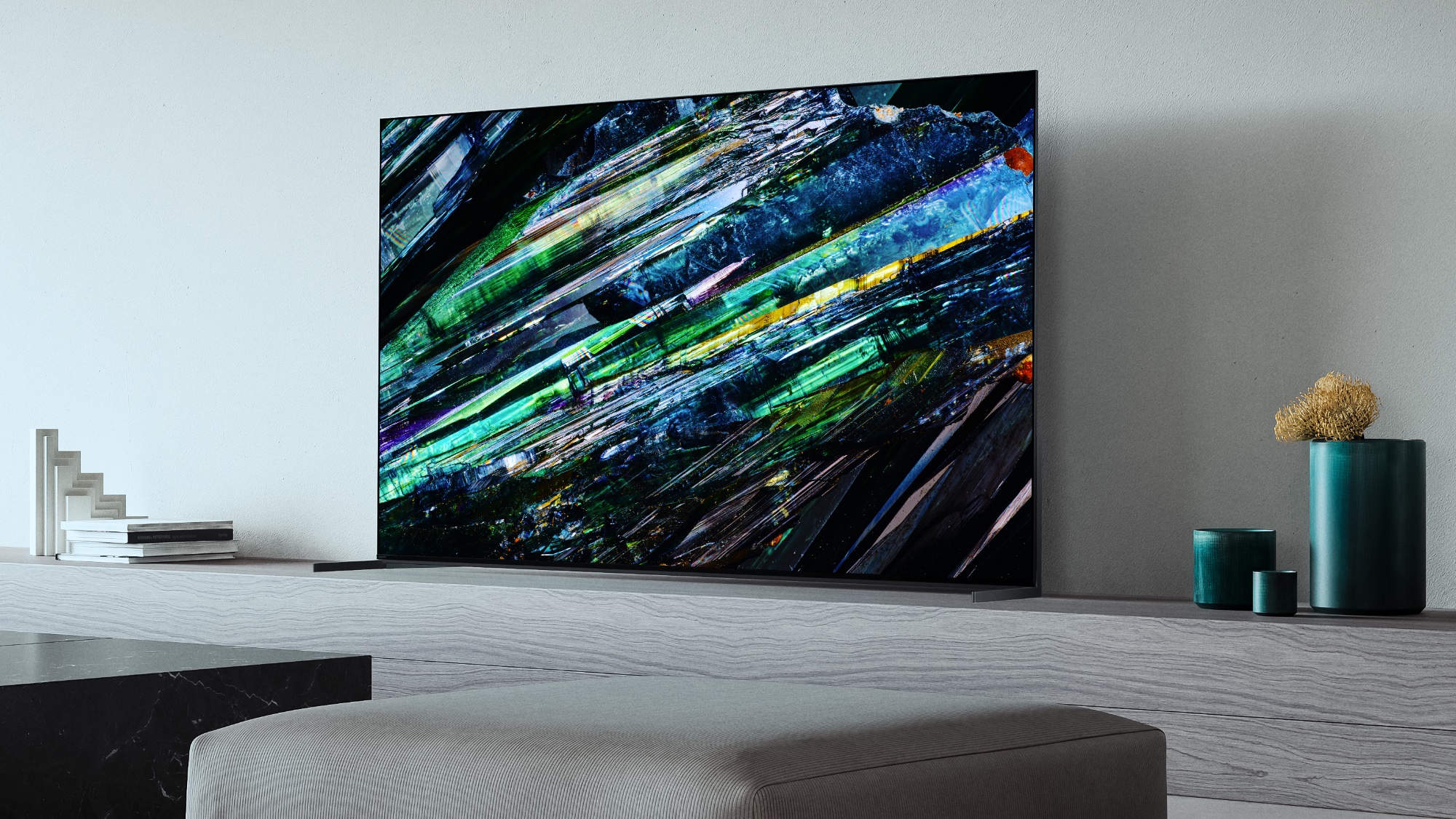

Specifications
Reasons to buy
Reasons to avoid
Sony's designs prove to bring the flavor in everything from color, sound, and general performance, best of all witnessed in its Bravia XR A95L OLED TV. Like the Samsung S95C before it, the A95L will also be quite a hefty investment, but it brings to the table a blend of quantum dots and OLED technology, meaning you get the raw colors and high brightness of both panel technologies.
Strangely, despite making one of the best next-gen consoles in the PS5, Sony's TVs often lack in input latency, with the A95L sporting a rather high 16.1ms of lag. Add to that the fact that it only comes equipped with two HDMI 2.1 inputs and you probably might cringe at its over $2,000 price point.
However, it's totally worth the money thanks to its color accuracy, brightness output, and feature set, which comes with all the HDR tech you could ever ask for. In HDR content, it sports a respectable 99.95 percent of the UDA-P3 scale and brightness of 1,215.
Sony's commitment to bringing the best display tech to market shows no bounds, as proven by its new secret weapon against Samsung and LG in Mini-LED backlights. If you're in the market for one of the best HDMI 2.1 TVs, the Sony Bravia XR A95L OLED TV is your ticket to winning.
Read our full Sony Bravia XR A95L QD-OLED TV review.

Specifications
Reasons to buy
Reasons to avoid
TCL has been ever on the rise in its attempts to bring to market some alluring TVs with specs that take on major competitors like LG and Samsung at still affordable prices. Enter the TCL QM8 Mini-LED TV, a budget display with some serious firepower, including brightness specs that topple several LG models.
Glare is all but nonexistent on the QM8 thanks to its insane 2,201 nits of HDR brightness, which is just as good in standard content at 1,348 nits. Color accuracy might be just a tad low due to a Delta-E of 3.2, but with both a Rec.709 and UHDA-P3 coverage of near-97 percent, you won't have any issues watching either standard or HDR content.
But what about its gaming potential? The TCL QM8 uses a 144HZ refresh rate, which allows you the potential of serious FPS on a gaming PC. Of course, ALLM and VRR also round out its underlying gaming technologies, plus AMD FreeSync gives it that much needed protection against screen tearing.
There's no question the QM8 comes as among the best HDMI 2.1 TVs, but it does only have two ports of the input standard. It's a hard bargain to beat at just $1,149 for its 65-inch model, though.
Read our full TCL QM8 Mini-LED TV review.
What is HDMI 2.1?
HDMI has been around for several years, but while the HDMI ports on your 4 or 5-year-old TV may look the same as the ports on the top models listed here, not all HDMI connections offer the same functionality.
The latest HDMI standard is HDMI 2.1, which features increased bandwidth (48 Gbps) to move a lot more data. With nearly three times the bandwidth of HDMI 2.0 (18 Gbps, or enough for 4K video at 60 frames per second). HDMI 2.1 supports uncompressed 8K video at up to 60 Hz, or 4K video at up to 120 Hz.
It's essentially a much larger pipe for information back and forth from video sources such as 4K Blu-ray players and game consoles and out to other devices, such as soundbars. That increased data allows for higher resolutions and higher frame rates, making it essential for 8k TVs and high frame rate 4K gaming.
Other key features include:
Auto low latency mode (ALLM) detects when a game console is connected or powered on, and allows the TV to automatically switch to game mode, turning off unnecessary video processing to reduce lag times. It's one less step you'll need to take before getting into your game.
Variable refresh rate (VRR) uses adaptive sync technology similar to Nvidia G-Sync and AMD FreeSync, aligning the TVs refresh rate with the frame rate of a connected game console. By matching refresh rate to frame rate, the TV is able to play games with perfect smoothness, eliminating any judder or screen tearing that can be caused by new frames rendering mid refresh.
Enhanced audio return channel (eARC) is another great feature offered on HDMI 2.1 (but not exclusively, it can also be found on the more common HDMI 2.0 connection) which allows you to use a single HDMI cable to connect a TV to a soundbar or other audio equipment, without requiring additional cables. ARC allows a downstream connection over HDMI, meaning that you can use one of your regular HDMI connections to output audio to a soundbar. With the higher bandwidth and HDMI 2.1, ARC technology is updated and enhanced to support uncompressed audio formats, such as Dolby Atmos. (Read our article What is HDMI ARC? to learn more.)
Who needs HDMI 2.1?
There are a few instances where HDMI 2.1 will be indispensable, with features that require the new high bandwidth connection.
The first is gaming. If you want to get the best possible performance from a new PS5 or Xbox Series X, you'll need to take advantage of the console's HDMI 2.1 connectivity, and that means using a TV that has HDMI 2.1, and using a compatible HDMI cable. Features above like ALLM and VRR are only available in the 2.1 spec, so we firmly recommend HDMI 2.1 for anyone looking for the best gaming TVs.
Secondly if you've forked out for a Dolby Atmos soundbar (after reading our best soundbars in 2022 article, of course), HDMI 2.1 ports will offer you eARC as standard, meaning your soundbar can receive an uncompressed Dolby Atmos soundtrack from your TV, for the best possible audio performance.
What about 8K TVs with HDMI 2.1?
8K early adopters will need HDMI 2.1. As the first single HDMI connection capable of carrying 8K resolution at watchable frame rates, HDMI 2.1 is indispensable for 8K. Or it will be, whenever 8k media really arrives.
For the time being, there is nothing noteworthy, which is why we don't recommend 8K TVs at this time. There are no 8K-enabled media players or game consoles either, so it's kind of a moot point. Sure, the Xbox Series X and PS5 can handle 8K in theory, but it's not enabled yet. And even if it were, there's a big doubt about whether we will see 8K native gaming any time soon.
When 8K media does arrive – and it's not a matter of "if" but "when" – HDMI 2.1 is the current standard it will use, so early adopters will want to keep an eye out for the new spec now.
What about HDMI 2.1 cables?
I know what you're asking yourself right now, and the answer is "Yes." Yes, the new HDMI standard will require new cables. Because the new HDMI 2.1 specification offers significantly more bandwidth and features than older versions, using an older HDMI cable just won't cut it.
That's not to say that an older cable won't work. The different versions of HDMI are backwards compatible, so you can still connect with an older cable, but you will give up the bandwidth and features that the 2.1 spec offers, and the older cable will serve as a bottleneck, preventing the higher resolution and frame rates you would otherwise be able to enjoy.
Here are some HDMI 2.1 cables we recommend.
Belkin Ultra High Speed Premium HDMI 2.1 cable
This 2-meter cable gives you plenty of length for connecting a game console or media player over HDMI 2.1, and boasts the full 48Gbps bandwidth required for 4K@120HZ or 8K@60Hz. Durable 2-layer shielding construction minimizes interference, and the whole thing sells for under $40.
Monoprice 8K No Logo Ultra High Speed HDMI 2.1 Cable
The best price on HDMI 2.1 we've seen comes from value champ Monoprice, which sells this 1.5-foot HDMI 2.1 cable for under $10. Granted, it's short, but you may not need much length when connecting your PS5 or Xbox Series X to your TV, and it still boasts full 48Gbps throughput and all the resolution and features that come with it.
SecurOMax HDMI 2.1 cable with Braided Cord
The SecurOMax is another highly affordable 6-foot HDMI 2.1 cable, but it gets our attention for more than just the bandwidth and feature support. From its 24K gold-plated connectors to its silver-coated oxygen-free bare copper wiring, the cable offers superior connection with a thiner and more flexible cable, protected by braided sheathing and triple-shielded to prevent interference.
How we test TVs with HDMI 2.1
Like every other TV we review, all of the above TVs were put through our rigorous testing process. Our collection of lab tests measure color gamut, color accuracy and brightness to objectively see which sets are the best for these key indicators. We use these results to make numbers-based comparisons about color and display quality.
We also test for lag time, measuring to the millisecond how long it takes for content to travel from the original video source to the screen. TVs with shorter lag time offer better gaming performance, an especially important concern for HDMI 2.1 shoppers, who are most likely to be using the new connection to get the most from their game console.
We spend hours with each set to see how our lab results translate into anecdotal performance. We also compare competing sets using a range of content across several sources. With that information, we can tell you which TVs look best, sound best and offer the best viewing experience.
Of course, we also consider the smart TV functions and apps for each TV, looking at everything from the remote control design to the voice interaction.
Sign up to get the BEST of Tom's Guide direct to your inbox.
Get instant access to breaking news, the hottest reviews, great deals and helpful tips.
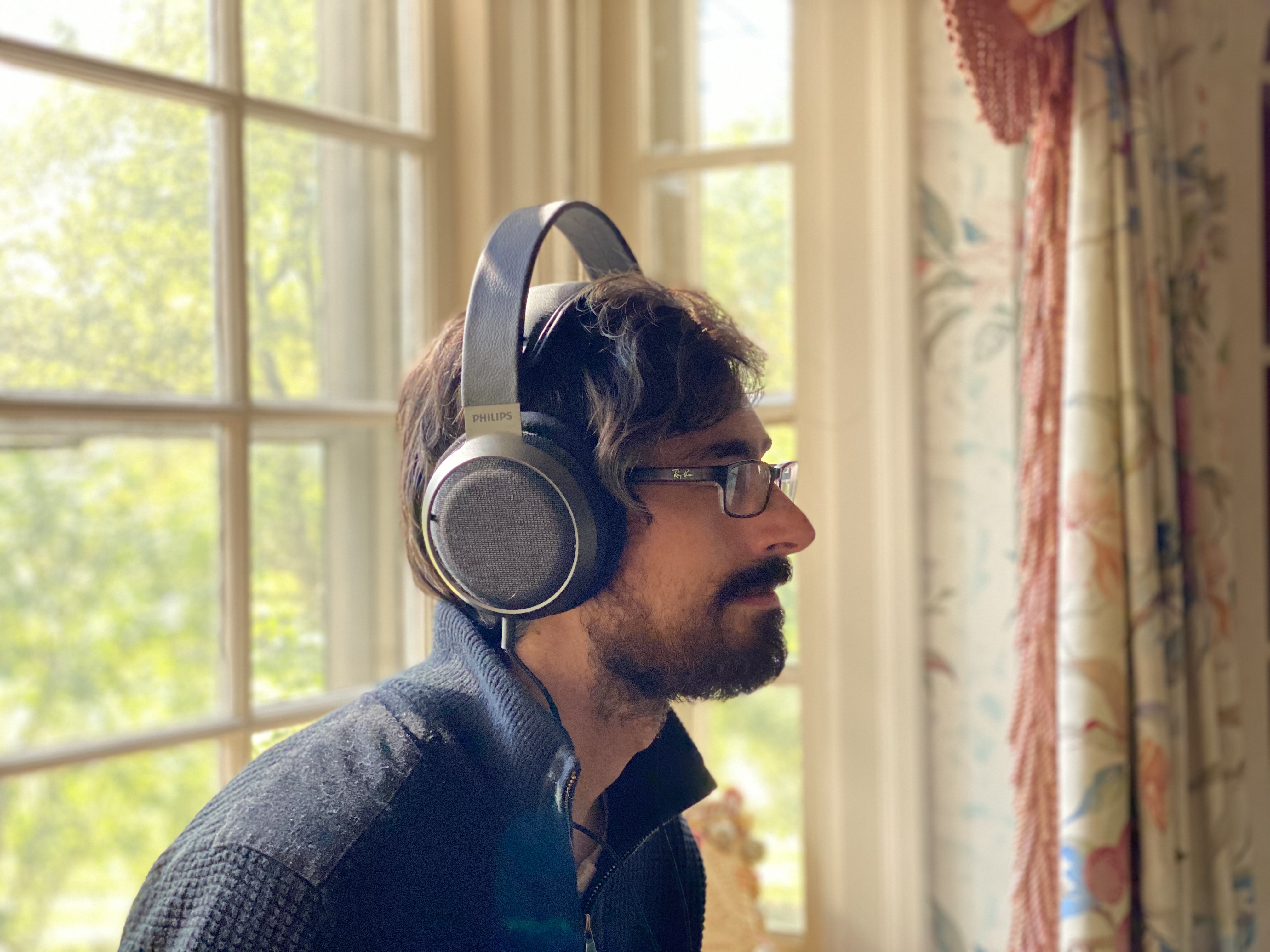
Nick Pino heads up the TV and AV verticals at Tom's Guide and covers everything from OLED TVs to the latest wireless headphones. He was formerly the Senior Editor, TV and AV at TechRadar (Tom's Guide's sister site) and has previously written for GamesRadar, Official Xbox Magazine, PC Gamer and other outlets over the last decade. Not sure which TV you should buy? Drop him an email or tweet him on Twitter and he can help you out.
- Ryan EppsStaff Writer
